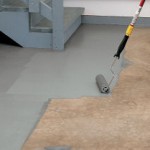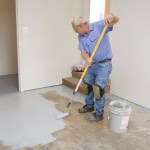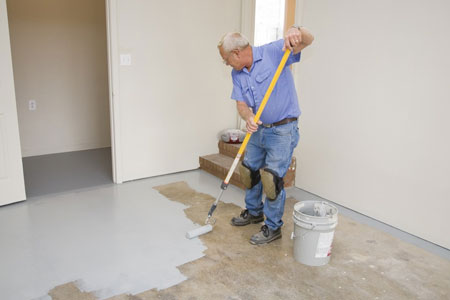We live in Michigan where our basements can be a little scary; especially if you have an older house! There are lots of things that can be done to remedy that. But perhaps the simplest thing to do is to simply paint the floor. It’s amazing how much a coat of paint can brighten a dreary basement. We’ll help give you the confidence to tackle your floor this weekend!
Listen here:
Show notes for episode 022:

Summer is almost over. And that means our lawns have made it through the toughest part of the year. Some may have made it through the heat like champs. Others, however, may have lost the battle with heat and minimal rain, and now have featured brown and dead patches.
Don't fret! According to Matt Bakker from Landscape Design Services, you can still bring your lawn back to its glory days before snow flies. He's got everything we need to know about seeding the bare patches in our yards.
There is nothing more frustrating than trying to do a simple task, only to find you don't have to right tool on hand. Try opening a bottle without a bottle opener (Dan!), or tighten a screw using a penny (Betsy!). It takes way more time to complete the task and there is so much frustration involved!
This same theory applies to painting as well. If you follow our list and always have these painting tools on hand, your next project is guaranteed to be a lot less stressful because you won't have to stop midway through the project (or maybe before you even begin!) to buy the right tool.
There are a lot of home improvement projects we are comfortable tackling--anything involving wood is generally acceptable, minor plumbing projects are ok, and anything involving paint is a breeze. But electrical....oh, electrical....that is a whole different story! Sure, we can change light bulbs and maybe even wire up a fan or a new lighting fixture. But when it comes to questions like "why do my lights dim when I run the microwave?" we figure it's best to ask a professional.
Lucky for us, Bill Haveman, co-owner of Haveman Electric, agreed to stop by and talk about some common household electrical questions. Hopefully, by the end of the conversation, our power concerns will be put to rest.
Miss Etta James, in the 60s, sang about all the fun you can have in the basement. But what happens if you have a Michigan basement? What if you have dark, cold concrete floors and tony spiders hanging in the corners? It's sounds more like a dungeon that a place to hang out and have fun.
But there is solution! It's amazing what a difference just painting the floor can make. It will brighten up the space and make it feel a little less cold. And if you are concerned about tackling the project, don't be! We've got you covered with tips and tricks from start to finish.
Floor Painting Tips
- Use a 14" or 18" cover if possible
- Use a 3/8" nap cover
- Use an extension pole. It will save your back!
- Brush 2" strip around all the edges (cut in)
- Roll paint from paint tray
- OR try pouring paint straight out of the bucket in a line on the floor!
- Pour a few feet from wall
- Pour a 4" wide strip
- Only pour as much as you can evenly spread before the paint dries
- Could use a 3/16" nap cover with this application method
- Work with a helper
- Let paint dry completely before introducing light foot traffic
- Waterborne - at least 6 hours
- Oil - at least 12 hours
- All dry times will be slowed even more without air circulation and/or humidity



 Painting a basement floor is a great way to improve your home without dropping a lot of money. However, while the project isn’t complicated, there are a few things you should know. First off, as we wrote here, you first must make sure that your floor is even a candidate for paint. If you’ve done that and you’ve determined that your floor can be painted, the next step is to determine which floor paint to use.
Painting a basement floor is a great way to improve your home without dropping a lot of money. However, while the project isn’t complicated, there are a few things you should know. First off, as we wrote here, you first must make sure that your floor is even a candidate for paint. If you’ve done that and you’ve determined that your floor can be painted, the next step is to determine which floor paint to use.
